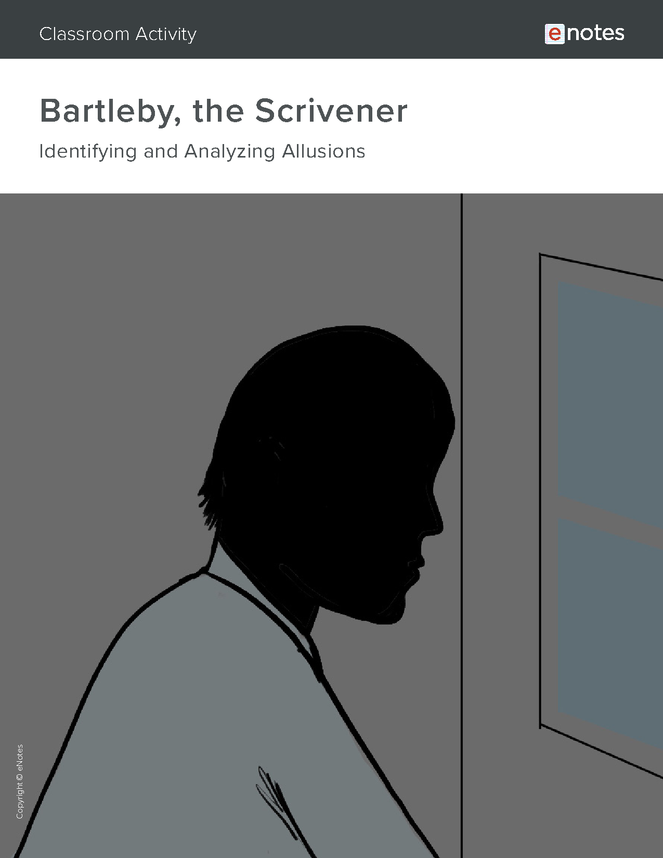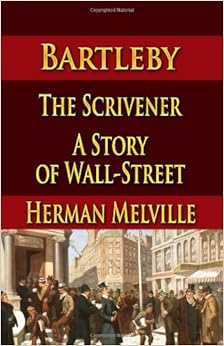

Bartleby is a reminder, however, that it is not just the drunken bum on the street who symbolizes the refuse of capitalism. The narrator even contemplates pretending Bartleby isn’t there, just “walk straight against him as if he were air” (p. He is an embarrassment, just hanging out in the corridor, unwanted because of no further use to anyone. These images describe the commercial society that stems from Wall Street, where the bottom line is money, and the relationship of person to person does not come into the picture at all. Bartleby is compared to something broken and floating in an endless sea, belonging to no one. He imagines the scrivener already in his winding sheet Bartleby “seemed alone, absolutely alone in the universe. The lawyer feels he will be called a villain if he “dared to breathe one bitter word against this forlornest of mankind” (p. 1961), he has “cadaverously gentlemanly nonchalance” (p.

1963), a good way to describe the terrible loneliness of his ghostly life. He cleverly deduces Bartleby “was the victim of innate and incurable disorder”(p. The narrator takes special care to isolate Bartleby on arrival by putting him into his own section of the office, behind a screen. When not copying, he looks out his window at a brick wall. Ginger Nut seems to supply him with his morsels of food. True, he does give an old coat of his to Turkey, but mostly because the man is shabby and not presentable at the office.īartleby does not talk to anyone, has no friends, never leaves the office, even for meals. The narrator has been working on Wall Street for thirty years and has never had these human feelings before. Because the man is sleeping on the couch in his office, he feels “The bond of a common humanity” (p. 1962) to think of a lonely life like Bartleby’s. He is seized for the first time with “over-powering stinging melancholy” (p. 1962) on Broadway, at night or Sunday, it is like a ghost town. Though during the day he sees “bright silks and sparkling faces” (p. When the narrator finds Bartleby at the office on a Sunday morning, not only is he annoyed, he is appalled. This image affirms the theme of isolation, death, non-communication. The only piece of information the narrator ever unearths about him is that his previous job was at the Dead Letter Office in Washington. Bartleby, however, appears to have no origins: “one of those beings of whom nothing is ascertainable” (p. If he can find a relative, then the narrator will be off the hook. Only when Bartleby becomes a problem, only when the narrator wants to get rid of him, does he try to find out if he has relatives.

It takes a long time before the narrator is even curious about Bartleby’s origins. At first, he reconciles to Bartleby because “his great stillness” “made him a valuable acquisition” (p. Though the narrator appears to be friendly, tolerant, and familiar with his clerks, he sees them primarily in terms of “usefulness” to him. “John Jacob Astor” is thrown out as his client only to evoke a sense of status. The other characters have nicknames: “Turkey, Nippers, and Ginger Nut.” The narrator never divulges his name. Only Bartleby is named, and then, only a last name. No private life is displayed or discussed. The characters are only connected through their work relationship at the office. This “Story of Wall Street” demonstrates the loneliness and isolation of modern life.


 0 kommentar(er)
0 kommentar(er)
